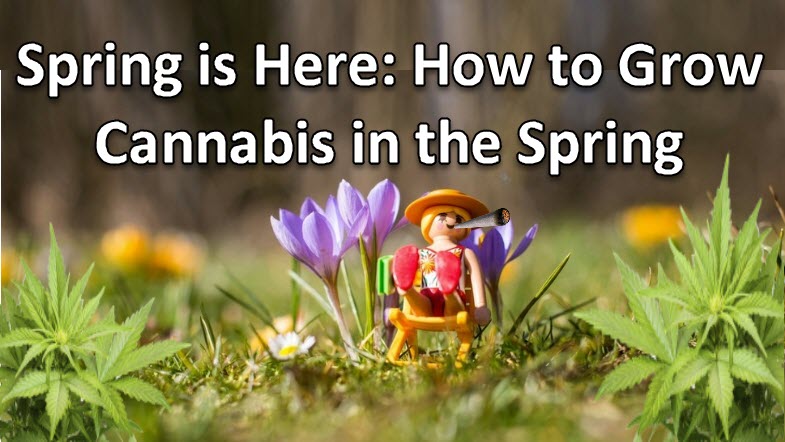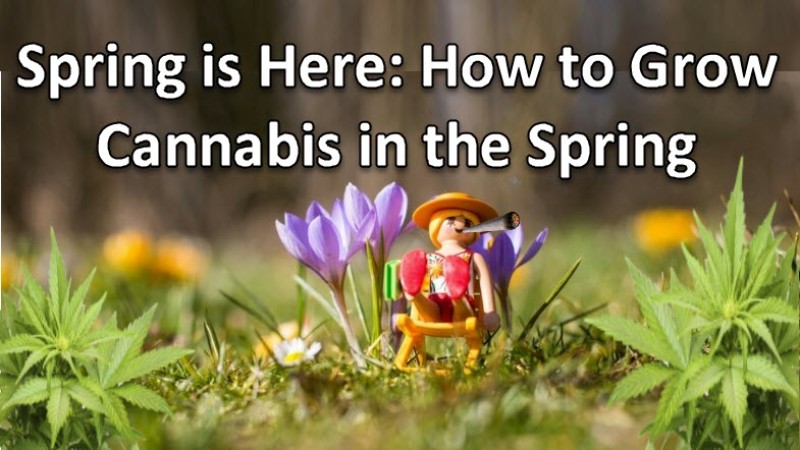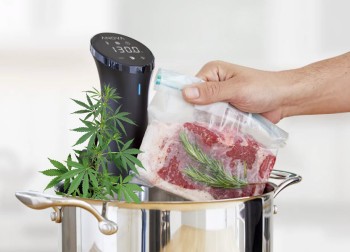Spring is Here: How To Grow Cannabis In The Spring

There are so many reasons to love spring.
This season brings longer days, shorter nights, warmth, and everything in nature blooms.
Spring is also one of the best times of the year to grow cannabis outdoors. If you’ve never grown cannabis yourself, or experimented with growing it outdoors, this season is the perfect time to do so. If you get started now, you can enjoy your harvest by the early summer.
To get prepared, ideally you should have had a few weeks in advance to get some good seeds and grow them. It’s also good to have an idea of the climate that you live in, because different strains require different conditions. Sativa-dominant strains need a longer flowering period and give you less yield, which means that they are ideal for growers who have the benefit of living in areas with longer growing seasons.
But if you live in an area with a shorter growing season, you’re better off with indica-dominant plants which work well with shorter flowering times yet result in huge yields.
Here’s how to succeed growing cannabis during the spring:
- Start the growing process indoors.
This might seem strange, but seasoned growers know that the secret to harvesting huge plants during the fall is to start growing them in the spring – indoors. Think of cannabis as a common garden plant such as tomatoes. In fact, cannabis and tomatoes have similar needs for growing.
Farmers in many parts of the country manage to yield large, healthy tomatoes every summer even if they live in temperate climates. That’s because they start growing indoors, sometimes as much as three months before the last frost. Experts believe that if you want to harvest massive outdoor plants, you should start planting them indoors by early December, ensuring that the temperatures are between 70 to 75 F with around 50% humidity. When you no longer have to deal with frost, you can continue your plants’ vegetative stage outdoors during the spring and summer, and come fall your cannabis will start flowering.
- Prepare your cannabis grow beds in advance.
Before you plant, start loosening up your soil. Soil becomes compact and tight during the winter, so it’s important to loosen it up then finish by adding a layer of cured compost on top of the soil. Worms can also help aerate soil naturally, making it easier for your plants to grow roots.
- Germinate your seeds.
The germination process can now start. Do this by wrapping your cannabis seeds inside moist paper towels, fold it, then keep it in a warm area until the taproots have revealed themselves. You can also make use of plates; one to cover the paper towel and the other to lock moisture.
When you are inspecting for sprouts, be as gentle as possible because you can damage the seed sprouting process if you aren’t careful. By 1-4 days, you should see some sprouts; the next thing to do is to transfer the sprouted seeds, with the roots facing down, into your growing medium of choice. Once you’ve planted the seeds, expose it to 24 hours of light a day using CFL grow lights.
- The vegetative stage begins.
Now that the vegetative stage is here, it’s important to give your cannabis plants the nutrients that it needs for healthy growth. If your area no longer has frost, it’s time to bring your plants outside.
When transferring the plants to an outdoor environment, be sure that the area is secure and located in a safe place to avoid exposing it to unnecessary stress. Observe your plants at least twice a week to inspect for pests or damage; it can also tell you if your plants may need more nutrients. When the cannabis starts to grow nodes, then you can begin pruning the shoots that are growing.
- Foliar-feed your plants.
Foliar feeding is a process that gets rid of dust that may have accumulated on the plants, while feeding them with more nutrients. You can do this by spraying a solution enriched with mild nutrients on both sides of the leaves each morning; this also helps prevent the sun from burning the leaves.
Once this is done, your cannabis plants can now go through flowering. Give it enough nutrients – particularly phosphorus and potassium when the flowers start to form. This helps make sure that you get bigger plants.
READ MORE STORIES ON GROWING CANNABIS BELOW...
WHAT ARE THE BENEFITS OF GROWING YOUR OWN CANNABIS, CLICK HERE.
OR..
MISTAKES MADE WHEN GROWING MARIJUANA, CHECK HERE.







